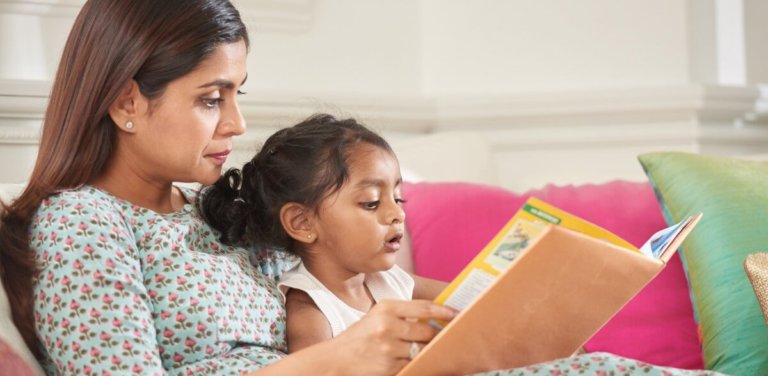
E-books are cheaper and easier to store but when it comes to engaging young learners, print books still lead the way, a new study has found.
They allow parents to get through more of the story too, according to the study published in the official journal of the American Academy of Pediatrics.
“The print book is really the gold standard in eliciting positive interactions between parents and their children,” lead author Dr Tiffany Munzer told ABC News.
“Our goal with some of the kinds of findings in the study is not to make things harder for parents, but to help them focus on activities that spark interactions with their children where they feel that back-and-forth is really easy.”
The findings could explain the American public’s continued preference for print books compared to their electronic counterparts. In a 2016 Book Reading survey by Pew Research Center, it was found that among those who had read a book in the past year, the majority read a traditional print book instead of the expanding number of digital options they have.
Nearly two-thirds (65 percent) read a print book in the last year before the survey. Only 28 percent read an e-book and 14 percent used an audio book.
Level of education plays a role in book format Pew study. College graduates are four times as likely to read an e-book compared to high school graduates.
However, when it comes to better engagement with their children, print books appear to be more effective, according to Munzer’s findings.
In the study, parents and their toddlers were given three mediums to read three different stories from the Little Critter series back-to-back : An electronic tablet with enhanced visual and sound effects, an electronic tablet without enhanced effects, and a print book with illustrations.
When studying these 37 pairs of parents and their toddlers, who were given a five-minute limit to read, Munzer and her team looked at the number and type of interactions shared by the families. These include parents explaining what they see on pages, asking questions and encouraging their toddler to point out objects.
Tallying these interactions, they found that toddlers made more statements when using print books. They showed more non-verbal signs of bonding too. Parents were more engaged and able to get through more of the story.
When using tablets, families talked more about the gadget than the story. This included asking about how to use the tablet; for instance, how to swipe to the next page or where to push a button.
These can distract young learners from the real benefits of reading, which is the development of language skills, as well as attention, memory and thinking skills that will prepare them for school. These come from having books read to them, enacting stories or having conversations about the stories in the book.
“The print book is a really beautiful object in that each parent and child interacts differently over a print book,” said Munzer. “Parents know their children well and have to make it come alive for their child to create that magic.”
Liked this? Then you’ll love…
Why schools’ reading lists should include more diverse books
Put Muslim characters who don’t need ‘saving’ on school reading lists







